A harbourside Sydney suburb rises again
Paragon of Pyrmont has transformed a coveted site west of Sydney’s CBD by applying fantastical luxe twists to units inspired by the humble Aussie terrace house
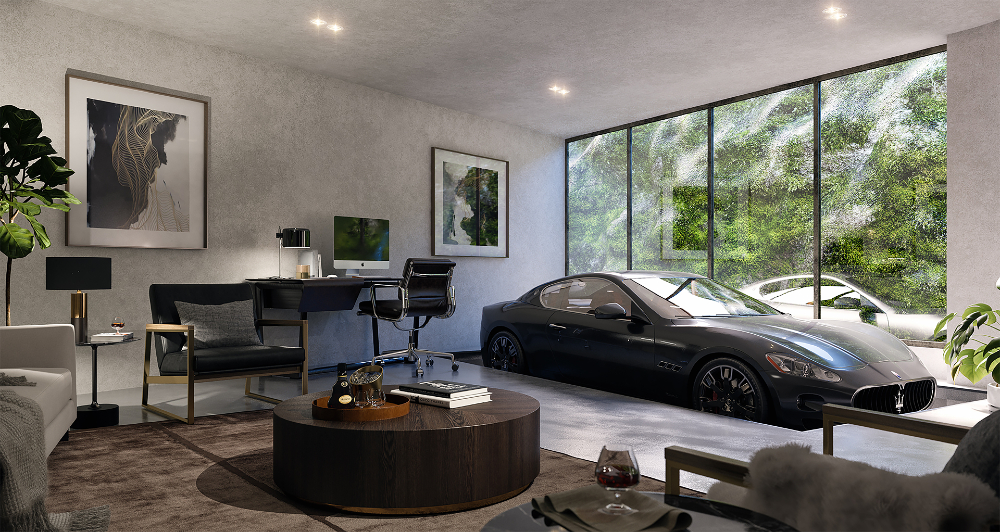
Picture yourself driving home in your luxury car. On the final approach, the garage doors slide open and the lights flicker on automatically—the smart home automation system just recognised you. Once inside, the ground beneath your car rises, lifting you through the ceiling. Your vehicle is now parked in a private living room, another glittering trophy to display in your abode.
Yet this “Maserati man cave” is not the only eye candy on show at Paragon of Pyrmont, the recently completed, award-winning residential compound by property developer Thirdi Group in Sydney.
“There are so many elements about the project I love,” says Luke Berry, co-founder and director of Thirdi Group. “It’s like you’re asking me to choose my favourite child.”
At just 31 units, the project lays out a maverick selling proposition for Pyrmont, one of Sydney’s most populous inner-city suburbs. Averaging 147 square metres in size, the homes have universal appeal: a sweet spot between the postcode’s many shoebox apartments and oversized penthouses.
“There’s a lot of people who live in apartments that aspire to buy into something bigger. And there’s a lot of people that live in big homes that don’t want to downsize to an apartment,” Berry explains.
A depressed area in the 1970s, Pyrmont has been gentrifying fast, shedding its industrial past to become a sought-after lifestyle precinct with excellent access to workplaces and transportation.
“When we bought the site, we saw an opportunity not to follow every other developer and put as many little apartments—little boxes—as we could on the site,” says Berry.
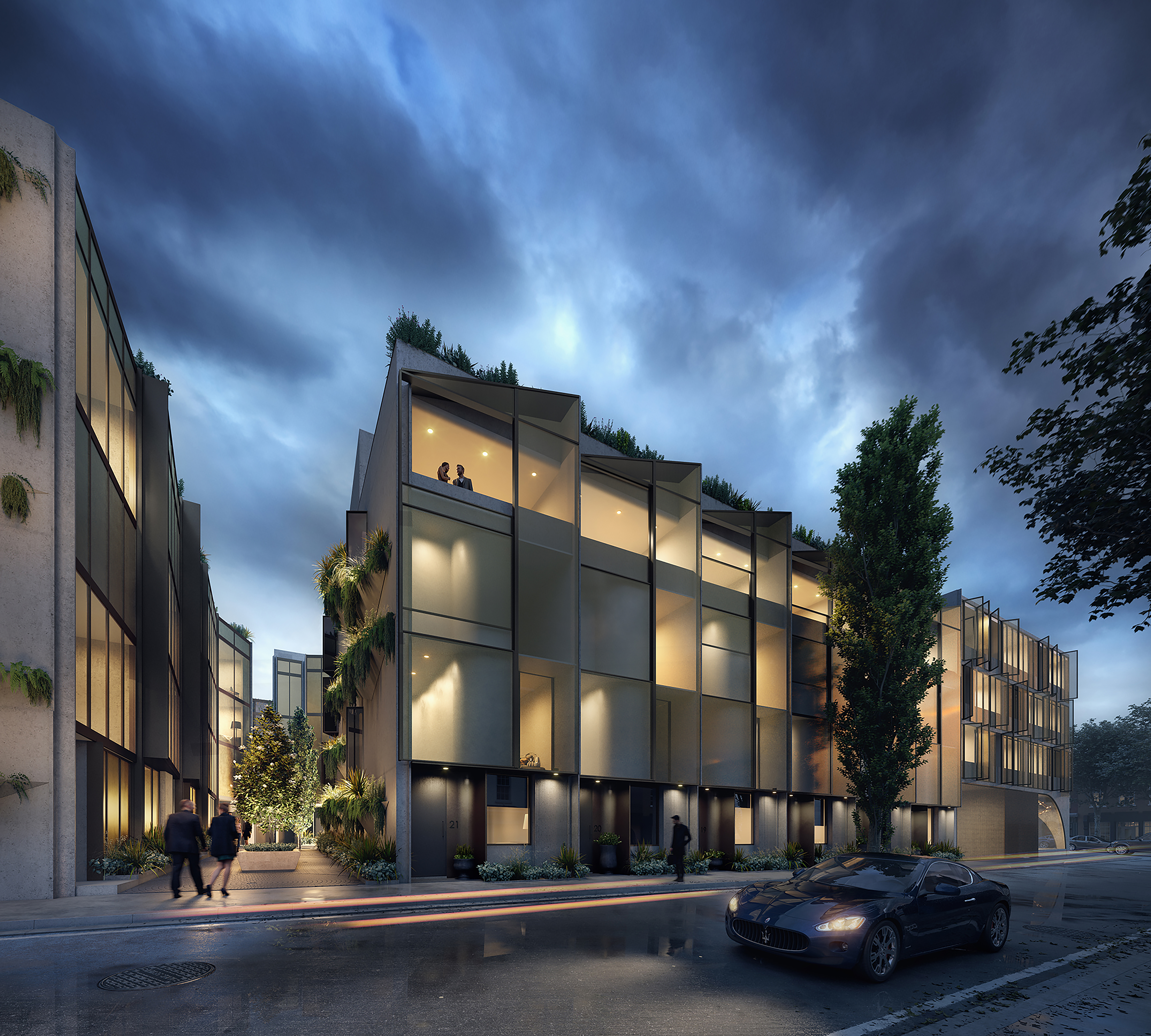
Rather than add low-density units as an afterthought to the development, Thirdi Group filled the project mostly with multi-level townhouses, loose reinterpretations of the iconic Sydney terrace house, in addition to single-floor apartments.
A 10-minute walk from the Darling harbourfront, the site sits on the cusp of transformative projects like the AUD750m (USD598m) Sydney Fish Market redevelopment and the upcoming White Bay Precinct, plus The Star, one of Australia’s largest casinos. Major shopping destinations, Westfield Sydney and the Queen Victoria Building, are also nearby. The development itself hosts two commercial suites.
“Pyrmont’s location at the foot of the CBD has made it an extraordinary neighbourhood to live in,” notes Charles Peters, former lead architect at SJB, the design practice enlisted for the project.
The 1,848-sqm site was earmarked for a new railway station as part of the Sydney Metro West project. “It had this question mark on it if it was to be a metro station,” recalls Berry. “No one wanted to spend any money on it until there was clarity.”
The New South Wales government eventually relocated the transit project and sold the site for A$22.4 million to Thirdi Group after a thorough public tender in 2015. But the lay of the land presented challenges for contractors.
Pyrmont is cratered with quarries, having produced the famous yellow block sandstones that built prominent Sydney edifices in the 19th century. A four-storey sandstone cutting juts above the plot.
“We had to build and excavate on a sheer sandstone cliff that probably had houses above it. That was a really big challenge,” recalls Berry.
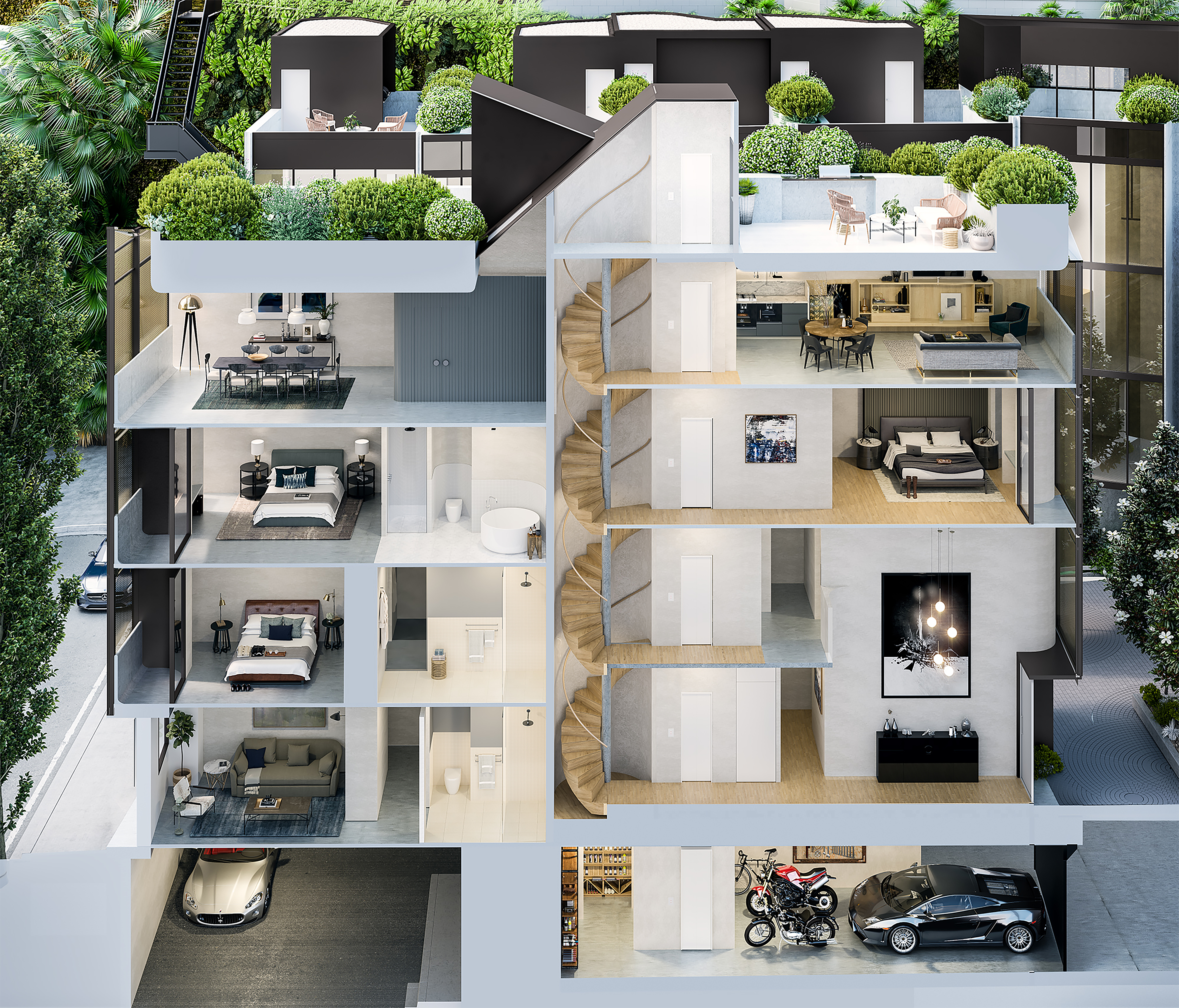
Project delivery managers were called in to assuage neighbours and stakeholders. “We had to work extremely hard with the local community to keep everyone happy, to even get it approved in such a dense area,” he adds.
We’ve followed the same successful layout of terrace living that has worked for a hundred years in Sydney. They’re very similar, but the beauty of ours is that they come with a private lift and a basement garage
While the site had the potential for 50 apartments, that volume did not project the best returns for the development, with building costs spiralling to A$90,000 a square metre. “It made sense economically to reduce the square metre rate because we’d get a premium by not being overdeveloped,” says Berry.
Rather than arrange the dwellings horizontally as apartments, SJB stacked them as four-storey townhouses, innovating on the Victorian-era terraced housing style that epitomised Sydney’s inner cities. Unlike their forebears, however, the 20 townhouses at Paragon of Pyrmont were erected back-to-back, trading the backyard for a roof terrace. “We’ve followed the same successful layout of terrace living that has worked for a hundred years in Sydney,” says Berry. “They’re very similar, but the beauty of ours is that they come with a private lift and a basement garage.”
More: Myanmar’s most hallowed colonial building gets new lease on life
The basement car park hosts the laundry and wine cellar, the latter built in conjunction with MoetHennessy, while the ground floor atop it doubles as a home office, with the option of a five-metre-high foyer. Upper levels are reserved for the living areas and up to five bedrooms. Residents navigate the residence through a lift or the remarkable spiral staircase in a circular shaft.
A guillotine window system allows residents to slide the metal mesh screens vertically around the full-height glazed panels in the living areas and bedroom balconies. Meanwhile, the apartment units are wrapped with floor-to-ceiling glazing spanning two streets, with articulated Nordic copper and bronzed screening providing privacy.
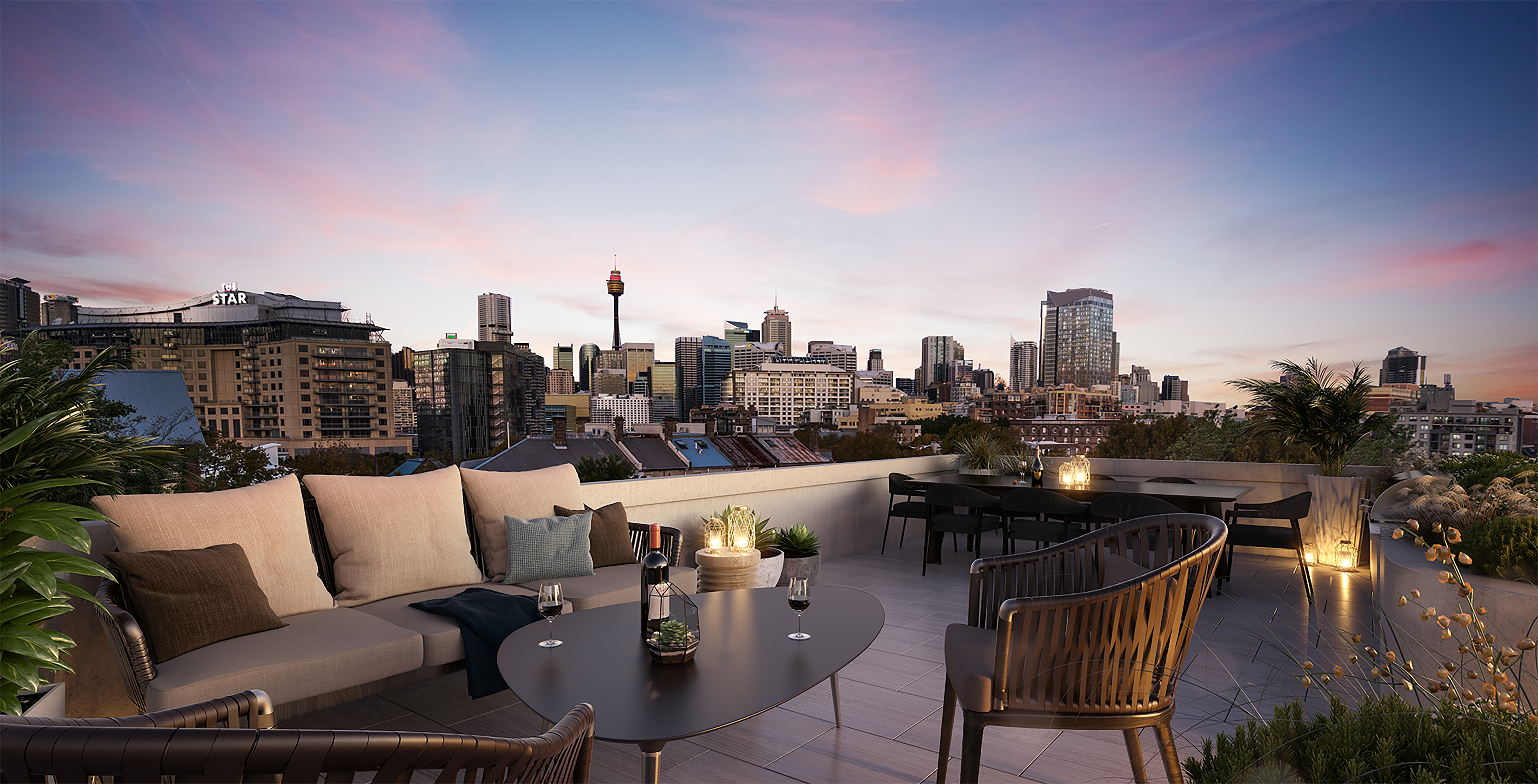
“We’re building in a dense area of Sydney, so we’ve got big windows, and they serve to generate great natural light and cross-through ventilation,” says Berry.
The 11 apartments at Paragon of Pyrmont are atypically roomy for the inner city, starting at 60 sqm to 70 sqm for the one-bedroom units. Interiors “capture a sense of raw luxury” without being “showy,” notes Jonathan Richards, former director of interior design at SJB. “They have understated elegance with polished concrete floors, sweeping curved white walls, and timber ceilings.”
More: A glimpse inside one of Malaysia’s tallest buildings
The apartment kitchens contain Gaggenau appliances, while the living rooms feature touch-activated cabinetry with Bang & Olufsen TV sets.
Paragon of Pyrmont is green in more ways than one. The townhouses are equipped with Tesla PowerWalls, letting homeowners store energy for off-grid consumption. The terraced dwellings and some of the apartments have landscaped private rooftops, fitted with outdoor kitchenettes.
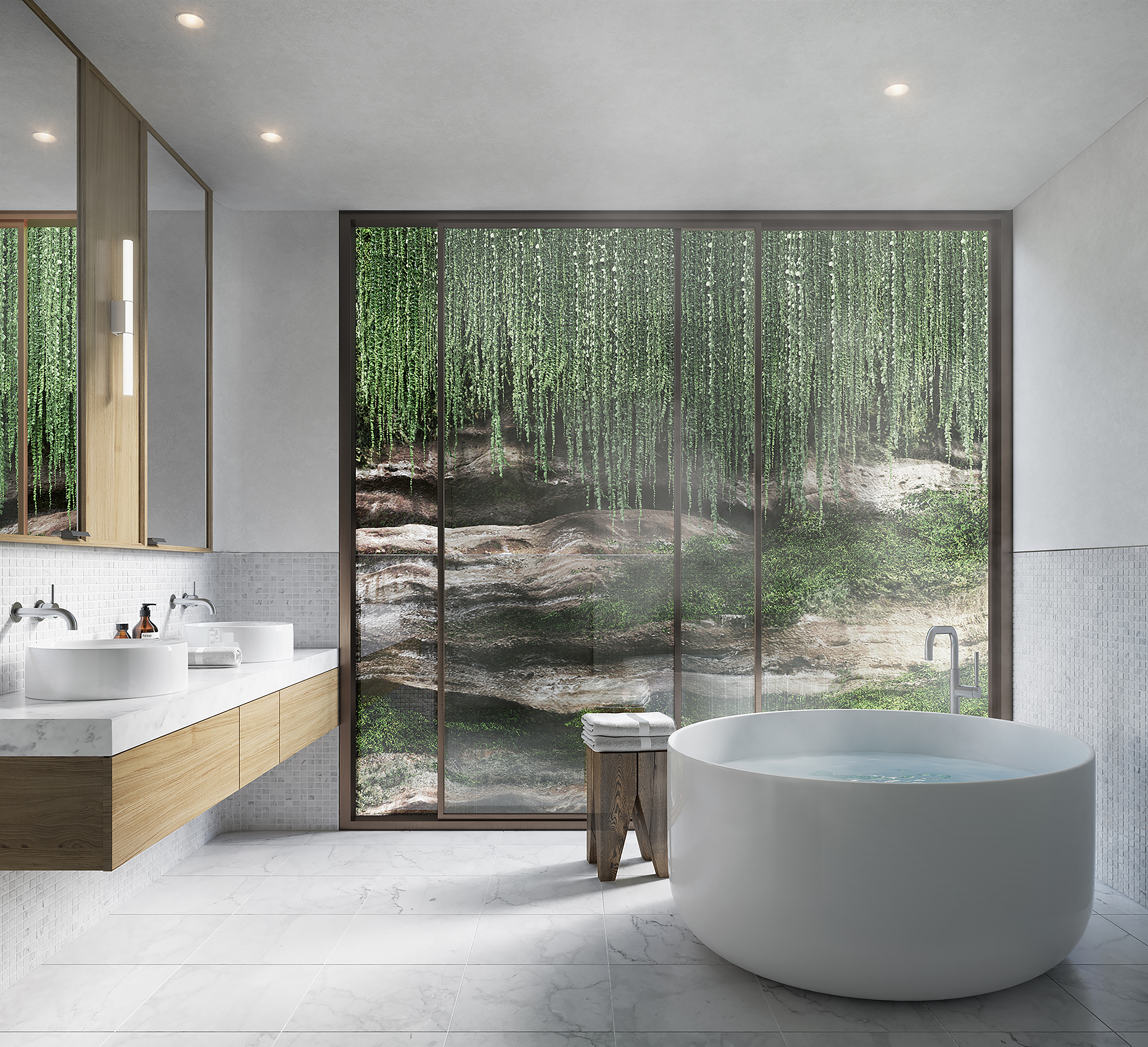
“A lot of developers don’t develop the roof,” says Berry. “They end up putting their plant, their air-conditioning on the roof. It’s an underutilised space in a CBD environment.”
Synergising with SJB, landscape architecture firm Black Beetle accented the site’s cobblestoned pedestrian street and public pathways with screening plants and other flora. Black Beetle also repurposed some of the sandstone unearthed around the site for the landscaping plan.
The leafy public domains could help ease owners of the “quarter acre” or detached suburban home, an enduring post-war symbol of the Australian Dream, into inner-city living. The project also beckons to house hunters from the west of Sydney, a bastion of old, cheap apartments poorly serviced by transport, as well as the CBD with its high-density apartments.
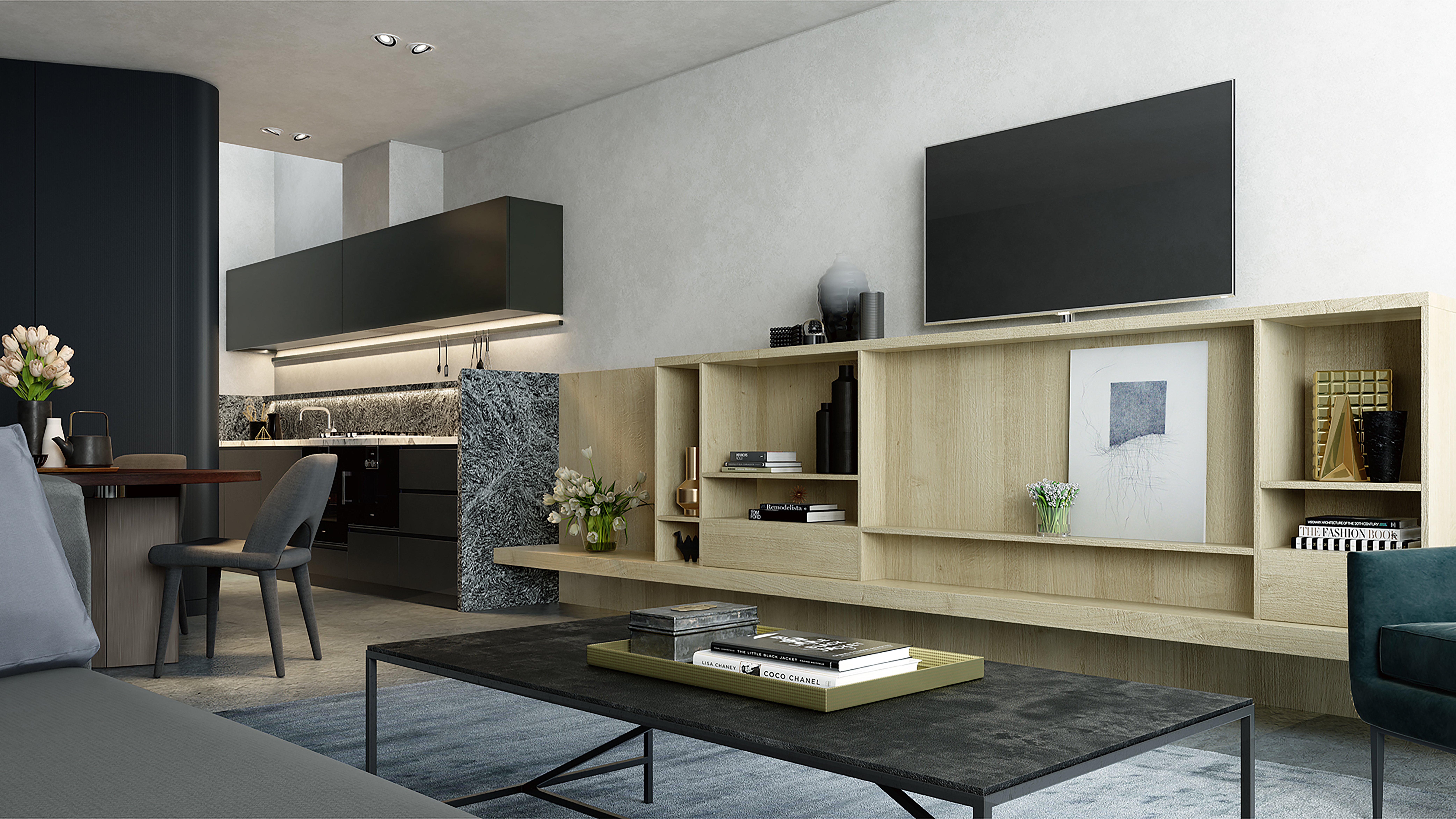
“Space is at a premium in Sydney and most cities in the world,” says Berry. “The one thing that cities are running out of is space to build on. That’s never going to change, and it’s unlikely that there’s going to be townhouses built and delivered in the future.”
In addition to local home hunters, owner-occupiers from Hong Kong, China, and Russia have capitalised on the project, reports Berry. The project’s inventive display suite, which came with a functional licenced restaurant, and engaging project management portal, have paid dividends.
“Ours is only 31 units, so there’s a real strong sense of community. Buyers don’t want to live in a block of units where there are 500 people they never meet,” says Berry. “People don’t necessarily like to be part of a big, soulless development.”
The original version of this article appeared in Issue No. 165 of PropertyGuru Property Report Magazine
Recommended
Why everyone is moving to Selangor and Johor: Malaysia’s real estate comeback
Malaysia’s upturn in fortunes is especially prevalent in secondary destinations such as Selangor and Johor
Penang’s silicon boom: How the US-China tech war is supercharging local real estate
Penang’s booming semiconductor industry has created ripples within the local real estate sector
New leader, new opportunities: How Hun Manet is shaking up Cambodia’s real estate game
Hun Manet is overseeing decent economic growth and widening access to the country’s real estate market for foreigners
Singapore embraces inclusive housing reforms amid resilient demand
The Lion City’s regulatory strength continues to exert appeal for international investors








